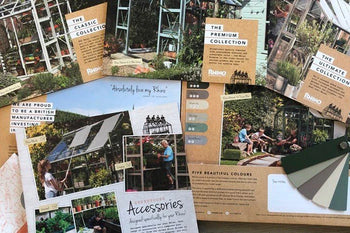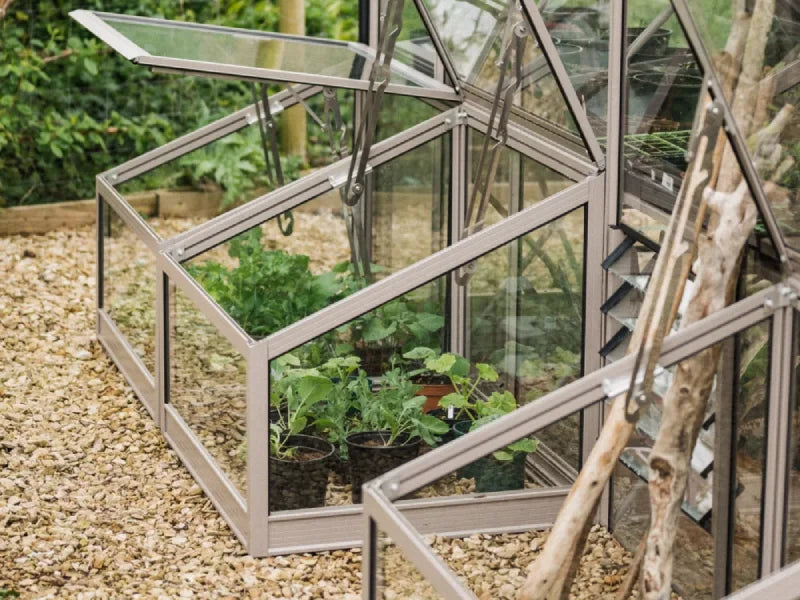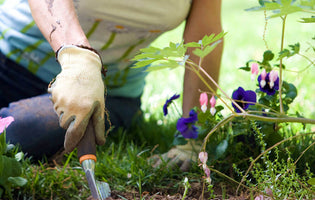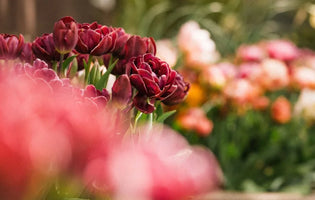Request a Brochure

The RHS Chelsea Flower Show for 2023 has rightly shone a light on inclusive green spaces that are suitable for all, with real focus being placed on ensuring that gardening is accessible for all who want to partake in it.
Gardening plays a pivotal role in all aspects of maintaining good overall health, from the more physical benefits of spending the day grafting in the garden, right through to the mental health benefits it brings too.
There’s no doubt that gardening has a significant impact on overall mental health, and according to a survey conducted by Rhino Greenhouses Direct, 70% of people say spending time in the garden helped their mental health during the Covid lockdowns.
It’s vital that gardening is totally accessible and catered to those who have visual, hearing and mobility impairments, and there are plenty of ways to make a perfect accessible garden sanctuary, without compromising in any way. Read on as the experts at Rhino Greenhouses Direct take you through everything from creating a stunning sensory and wellness garden to making your garden accessible to those with mobility issues.
Making gardening accessible to all
There’s a common misconception that making your garden accessible to all can be a challenge and requires a lot of forward planning, but that doesn’t have to be the case. Creating a sensory and wellness garden is actually relatively simple when you know how. Simply adding colour, texture and plants known to have healing qualities to your garden is a great way to kickstart your accessible garden.
Creating a sensory garden
The joys that gardening brings should be available to everyone and, with that in mind, there are plenty of ways to ensure you can enjoy our garden sanctuary, no matter your circumstances.
Here are a few suggestions on the best plants for a sensory garden:
Lavender
Lavender is well renowned for helping us sleep, with a number of sleep-related products including the herb, but did you know that it is also proven to improve your mood too? Floral scents like lavender help to make you feel happier and can actually have a calming effect on your emotions. Lavender is proven to help you ease anxious feelings, which allows you to sleep better, which inevitably improves your immune system.
Curry plant
Carrying on with the scent theme, a curry plant is perfect for any sensory garden thanks to its incredible, distinctive aroma. They are also pretty distinctive to the eye and touch, thanks to their silvery-grey foliage and clusters of yellow flowers, so they really do bring a little bit of everything to your sensory garden. It’s also worth noting that they are evergreen plants which are relatively hardy, making them easy to look after.
Lamb’s ear
If you are looking to add a unique to-the-touch plant for your sensory garden, look no further than Lamb’s ear, as this is one of the most unusually shaped plants out there. As the name suggests, Lamb’s ear bears an uncanny resemblance to the ears of a lamb. Easy to grow and requiring very little maintenance, Lamb’s ear is a fantastic addition to your sensory garden, thanks to its distinctive shape and feel.
Fountain grass
A sensory garden wouldn’t be complete without a little bit of sound added, and we’d suggest you consider Fountain grass. Thanks to its long, evergreen grass with bristly spikes, Fountain grass makes a lovely, soothing sound as a gentle breeze passes through it.
We’d also recommend adding plenty of other textures and sounds from other garden ornaments to make the sensory garden feel even more unique and to your specific requirements.
Creating a wellness garden
If you suffer from respiratory issues or simply want a space in your garden that has an abundance of plants that are proven to increase your overall wellness, there are plenty of plants that you should consider growing. Here are a few of our favourites:
Spider plants
Spider plants have been proven to be an extremely efficient cleanser of air, with tests showing that the plant is capable of removing up to 90% of potentially cancer-causing chemical formaldehyde from the air. Not only will this plant make you happier, but it’ll also make you much healthier!
Low maintenance and easy to grow, Spider plants are ideal for gardening novices. Thanks to their cascading long leaves, they’re ideal for use in vertical spaces. They are also a great indoor plant, as they require plenty of warmth and don’t do particularly well in cold environments, so they could form part of an indoor wellness garden for those with respiratory issues.
Basil
With its ability to vastly improve your mood, much like it improves almost any recipe you add it to, Basil is a must if you’re looking for a plant that’s sure to have you feeling happy in no time. Basil contains linalool, the component that gives the herb its distinct and pleasant aroma, which is proven to have a number of positive effects on the body and immune system.
Geraniums
Geraniums are well-known for having a positive impact on the nervous system. Brewing the leaves of this plant produces a tasty tea that has soothing properties, balancing hormones that cause stress and anxiety. Not only is this plant perfect for making genuinely effective teas, its rich and warming aesthetic is complemented by a mild scent that promotes peace of mind.
Suitable to be grown both in and outdoors, this versatile plant offers you plenty of options. Whether you want to make use of Geraniums as a fantastic centrepiece for your bedding plants, or want it to have pride of place in your living room window, the choice is up to you! They simply require at least 6 to 8 hours of sunlight per day and need to be protected from the cold where possible.
Creating an accessible garden
Gardening is an essential tool for so many people around the UK, so it’s vital that we do what we can to ensure it is completely accessible to everyone. There are a few steps you can take to ensure you are doing everything you can to make your garden as accessible as possible, from installing ramps in areas that are inaccessible unless reached by steps, to installing rails in areas that aren’t completely flat.
It's also important to ensure that you take steps to try and integrate accessible features into your garden in a natural way, as you can easily make your garden the sanctuary you have always wanted, whilst ensuring that it is totally fit for all access needs.
We would recommend including plenty of growing space around walkways, incorporating plenty of flowers and plants that are great at occupying vertical spaces on walls and fences, as well as plenty of flowers at higher levels to minimise the amount of bending from those who suffer from mobility issues.
Year-round gardening should be accessible to all, and that’s why wheelchair-friendly greenhouses are so important for those that suffer from mobility issues. Standard greenhouses are often too narrow to allow sufficient space for those who are in wheelchairs to manoeuvre successfully, so wheelchair-friendly greenhouses are an absolute must for any gardening enthusiasts out there. Greenhouses offer a great growing space for all manner of plants, vegetables and fruits, and with the right additions, can be used all year round.







